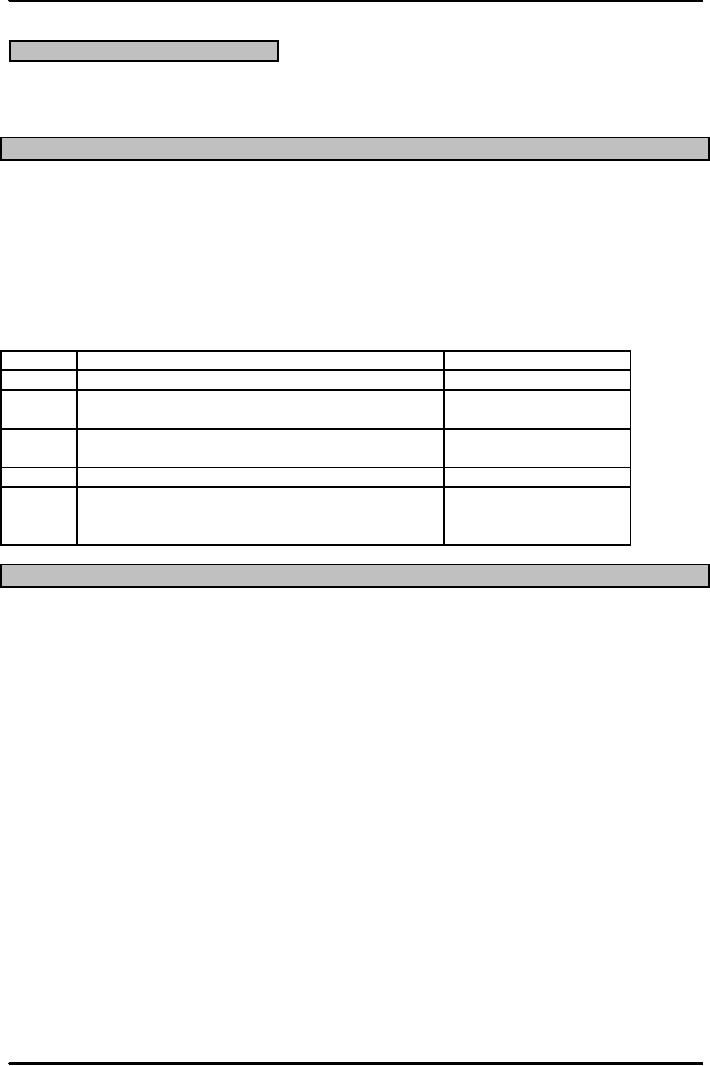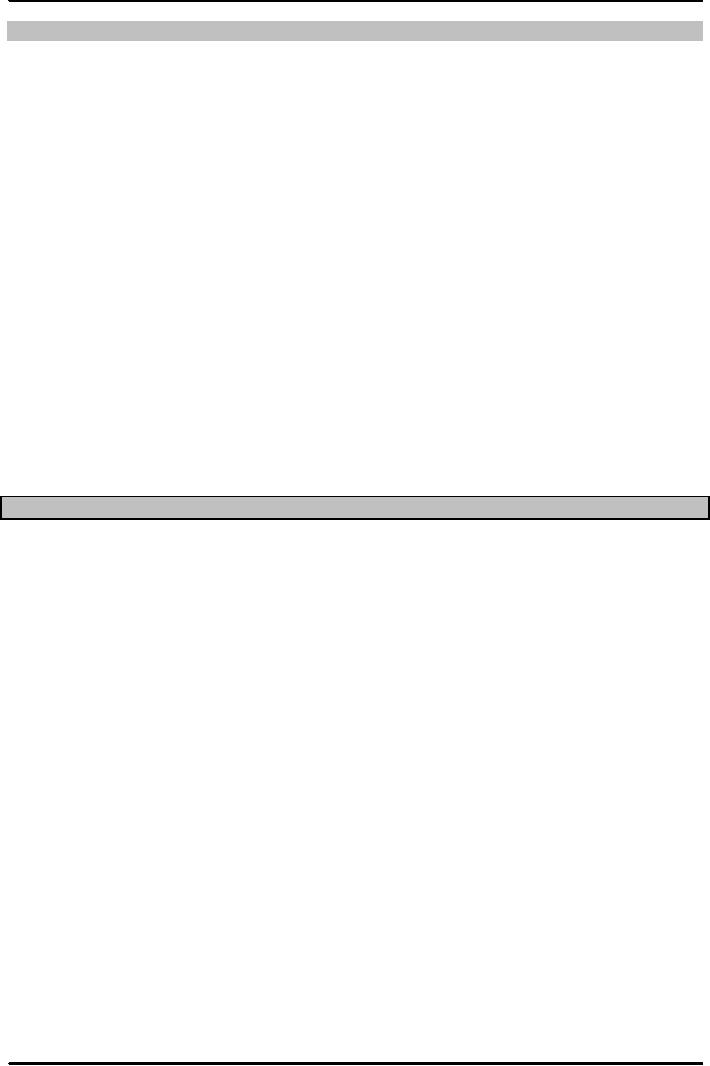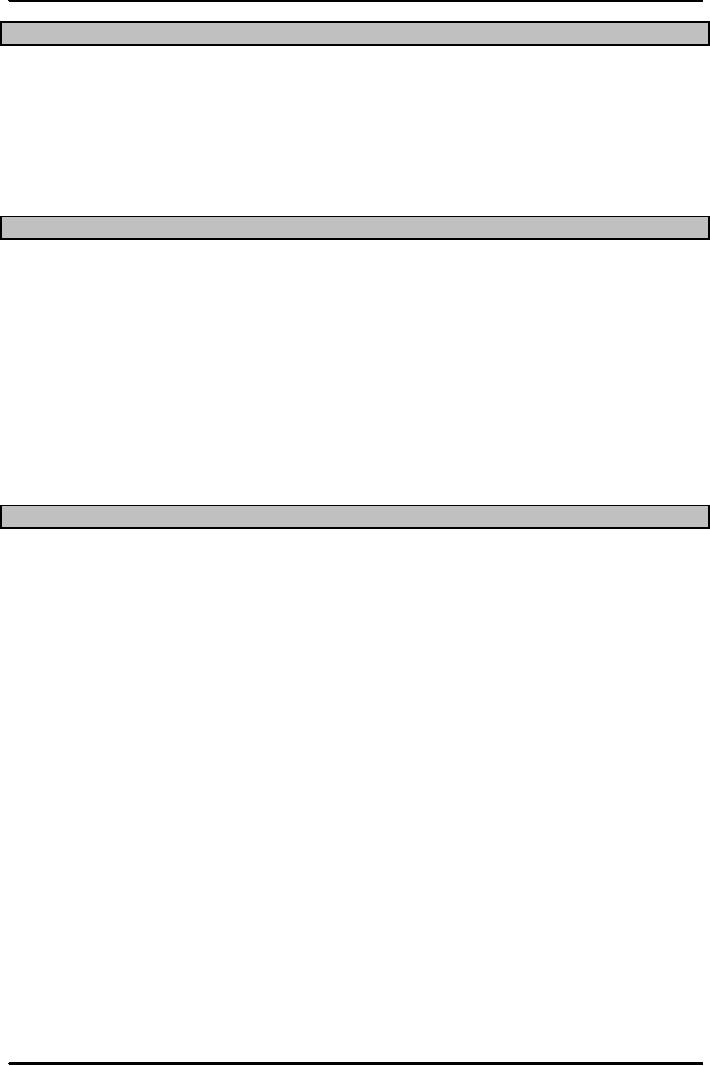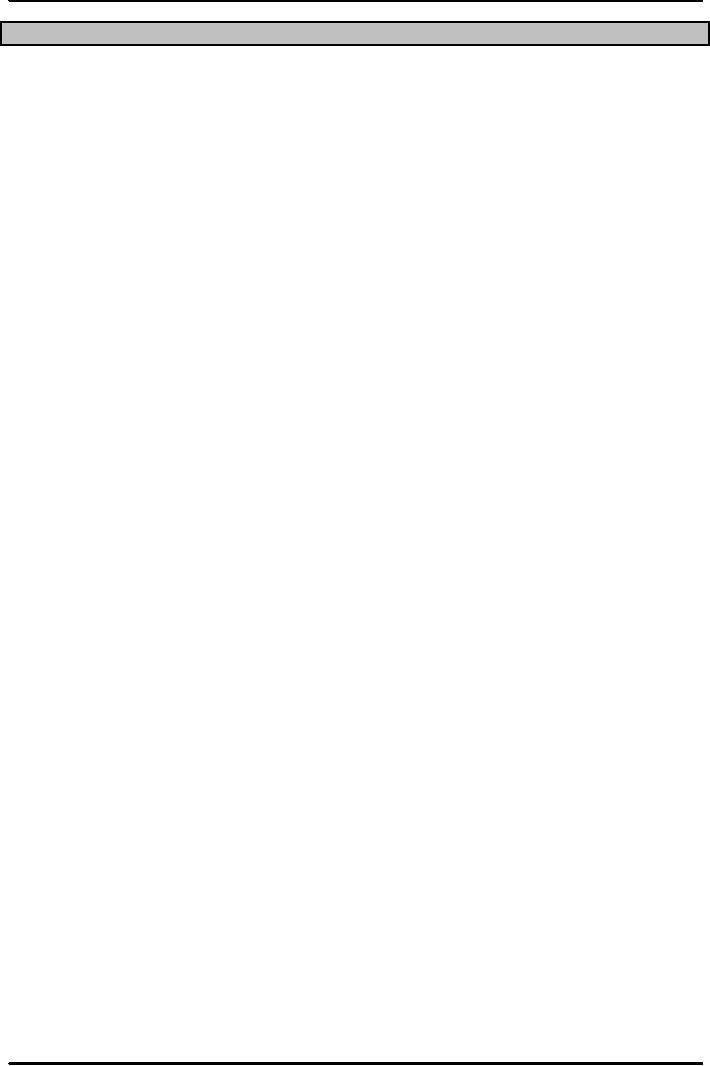 |

Production
and Operations Management
MGT613
VU
Lesson
25
TOTAL
QUALITY MANAGEMENT
Total
Quality Management is a philosophy
that involves each and
every individual in an organization
in
a
continual effort to improve
quality and achieve customer
satisfaction.
The
TQM Approach
TQM
is not called philosophy for
nothing. It is that common viewpoint as
well as attitude shared by
the
whole
organization that helps the organization
achieves its prime objective
of increase in revenue as
well
as a continuous relationship with the
customer, by providing a quality based
service which fulfills
the
customer's needs and requirements.
If
we apply the TQM approach we can identify
the role played by various
departments and interfaces of
the
organization. These roles at the
functional and departmental levels if not
in line with the
organizational
strategy would not allow the
organization to pursue
TQM.
Sr.
#
TQM
Approach
Department
1
Find
out what the customer
wants
Marketing
2
Design
a product or service that meets or
exceeds
Design
Dept
customer
wants
3
Design
processes that facilitates
doing the job right
Operations
Dept
the
first time
4
Monitor
and Audit (Keeping track
of) results
Senior/GM
Managers
5
Extend
these concepts to suppliers
SCM
/
Logistics/Warehouse
/Materials
TQM
CRITICISMS
TQM
Philosophy is often criticized
for reasons which show weak
implementation or poor
management
perspective.
The common criticism against TQM
is:
1.
TQM program not linked to
overall Organizational Strategy :
This is the weakness of
top
management
not a weakness in the TQM
philosophy.
2.
Quality based decisions not
attached to revenue or marketing
strategies: Quality concept
should
be
included in the functional side and
not treated as separate and
distinct from the
functional
departments.
3.
Incomplete planning with no clear cut
road map for TQM
implementation: A weak
implantation
strategy
that does not identify the
milestones, goals and step by step
objectives.
4.
Rigid and impractical TQM goals: An
absence of managerial skill, TQM goals
should be
achievable
and tangible.
5.
Non training of employees about TQM
philosophy. Employees if not trained
wont be able to
make
best use of TQM
philosophy.
112

Production
and Operations Management
MGT613
VU
Elements
of TQM
TQM
is a philosophy so its elements
consist of the various strategies,
tactics which includes
the
following:
Continual
improvement
Competitive
benchmarking
Employee
empowerment
Team
approach
Decisions
based on facts
Knowledge
of tools
Supplier
quality
Champion
Quality
at the source
Suppliers
Of
the elements described above, we should
also focus our attention on the
idea of continuous
improvement
as well as Quality at the
Source.
Continuous
Improvement: Philosophy that
seeks to make never-ending
improvements to the process of
converting
inputs into outputs. The
Japanese manufacturer as well as service
providers have longed
used
this
concept. Kaizen is the Japanese word
for continuous
improvement.
Quality
at the Source: The philosophy of
making each worker responsible
for the quality of his or
her
work.
Determinants
of Quality
The
various Determinants associated with the
quality concept in general and TQM
philosophy in
particular
is:
1.
Quality of design: Intension of designers
to include or exclude features in a
product or service
2.
Quality of conformance: The degree to
which goods or services
conform to the intent of the
designers
3.
Quality of Ease of Use: Ease of
use and instructions to use
increase the chances but do
not
guarantee
that a product will be used
for intended purpose and
function properly and
safely.
4.
Quality of Service after Delivery:
The degree to which goods or
services can be recalled
and
repaired,
adjustment, replacement or buyback or reevaluation of
service all come under
this
category.
113

Production
and Operations Management
MGT613
VU
The
Consequences of Poor Quality
The
common consequences of Poor Quality
are:
1.
Loss of business: Loss in
sales, revenues and customer
base.
2.
Liability: A poor quality
product or service comes with the danger
of the organization being
taken
to court by an unhappy or affected
customer.
3.
Productivity: Loss in productivity as
more time is spend in rectifying the
errors or short coming
then
producing more.
4.
Costs: Increase in costs as a
poor quality product is
repaired or replaced or made
new.
Responsibility
for Quality
Quality
Control Department cannot be held responsible
for Quality alone. Quality
is the responsibility
of
each and every individual
working for the organization. If we
look into any organization
be it a
manufacturing
or service provider we can see
the following departments
working diligently
for
achievement
of Quality.
1.
Top management
2.
Design Department
3.
Procurement Department
4.
Production/operations Department
5.
Quality assurance Department
6.
Packaging and shipping Department
7.
Marketing and sales Department
8.
Customer service Department
Costs
of Total Quality
Management
There
is a difference in opinion amongst
experts when they analyze costs
with respect to TQM.
Few
experts
feel that failure costs
should be taken up as internal and
external separately and others feel
they
should
be taken as one single entity of
failure cost.
1.
Failure Costs - costs
incurred by defective parts/products or
faulty services. Experts are of
the
opinion
that on average an organization
loses 20 to 30% of its revenue
because of poor
quality
or
costs associated with the
failure of the product or service.
Failure costs are of two
types
internal
and external:
a.
Internal Failure Costs are
the Costs incurred to fix problems
that are detected before
the
product/service
is delivered to the customer.
b.
External Failure Costs
are all costs incurred to
fix problems that are detected
after the
product/service
is delivered to the customer.
Of
the two, Internal Failure
Costs are less painful and
can help an organization to register
increase in
revenue
and not compromising its
product or service in the eye of its
customers as well as
its
competitors.
2.
Appraisal Costs are the
Costs of activities designed to ensure
quality or uncover
defects
3.
Prevention Costs include all
TQM training, TQM planning, customer
assessment, process
control,
and quality improvement
costs to prevent defects
from occurring
114

Production
and Operations Management
MGT613
VU
Quality
and Ethics
Quality
is closely associated with Ethics. A
good service would always be
able to fulfill customer
needs
if
it is able to follow Ethics in its
true spirit. A service or product
that has been poorly
designed carries
liability.
On the other hand if the organization has
followed ethics to manufacture a product or service,
it
would
be able to provide a quality
product or service to its
customer.
TQM
is an important concept and is followed by
various departments of the organization.
Accounting
department
measures the costs associated
with a poor quality based
service or product, Finance
department
measures the cash flows
associated with various
departments, Human Resources
employees
workforce
which is able to turn out
quality based work,
Management Information Systems design
TQM
based
systems to ensure increased
productivity, similarly marketing
department uses TQM techniques to
increase
its market share and
customer base. And last but
not the least Operations department
which
designs
and implements TQM strategies.
115
Table of Contents:
- INTRODUCTION TO PRODUCTION AND OPERATIONS MANAGEMENT
- INTRODUCTION TO PRODUCTION AND OPERATIONS MANAGEMENT:Decision Making
- INTRODUCTION TO PRODUCTION AND OPERATIONS MANAGEMENT:Strategy
- INTRODUCTION TO PRODUCTION AND OPERATIONS MANAGEMENT:Service Delivery System
- INTRODUCTION TO PRODUCTION AND OPERATIONS MANAGEMENT:Productivity
- INTRODUCTION TO PRODUCTION AND OPERATIONS MANAGEMENT:The Decision Process
- INTRODUCTION TO PRODUCTION AND OPERATIONS MANAGEMENT:Demand Management
- Roadmap to the Lecture:Fundamental Types of Forecasts, Finer Classification of Forecasts
- Time Series Forecasts:Techniques for Averaging, Simple Moving Average Solution
- The formula for the moving average is:Exponential Smoothing Model, Common Nonlinear Trends
- The formula for the moving average is:Major factors in design strategy
- The formula for the moving average is:Standardization, Mass Customization
- The formula for the moving average is:DESIGN STRATEGIES
- The formula for the moving average is:Measuring Reliability, AVAILABILITY
- The formula for the moving average is:Learning Objectives, Capacity Planning
- The formula for the moving average is:Efficiency and Utilization, Evaluating Alternatives
- The formula for the moving average is:Evaluating Alternatives, Financial Analysis
- PROCESS SELECTION:Types of Operation, Intermittent Processing
- PROCESS SELECTION:Basic Layout Types, Advantages of Product Layout
- PROCESS SELECTION:Cellular Layouts, Facilities Layouts, Importance of Layout Decisions
- DESIGN OF WORK SYSTEMS:Job Design, Specialization, Methods Analysis
- LOCATION PLANNING AND ANALYSIS:MANAGING GLOBAL OPERATIONS, Regional Factors
- MANAGEMENT OF QUALITY:Dimensions of Quality, Examples of Service Quality
- SERVICE QUALITY:Moments of Truth, Perceived Service Quality, Service Gap Analysis
- TOTAL QUALITY MANAGEMENT:Determinants of Quality, Responsibility for Quality
- TQM QUALITY:Six Sigma Team, PROCESS IMPROVEMENT
- QUALITY CONTROL & QUALITY ASSURANCE:INSPECTION, Control Chart
- ACCEPTANCE SAMPLING:CHOOSING A PLAN, CONSUMER’S AND PRODUCER’S RISK
- AGGREGATE PLANNING:Demand and Capacity Options
- AGGREGATE PLANNING:Aggregate Planning Relationships, Master Scheduling
- INVENTORY MANAGEMENT:Objective of Inventory Control, Inventory Counting Systems
- INVENTORY MANAGEMENT:ABC Classification System, Cycle Counting
- INVENTORY MANAGEMENT:Economic Production Quantity Assumptions
- INVENTORY MANAGEMENT:Independent and Dependent Demand
- INVENTORY MANAGEMENT:Capacity Planning, Manufacturing Resource Planning
- JUST IN TIME PRODUCTION SYSTEMS:Organizational and Operational Strategies
- JUST IN TIME PRODUCTION SYSTEMS:Operational Benefits, Kanban Formula
- JUST IN TIME PRODUCTION SYSTEMS:Secondary Goals, Tiered Supplier Network
- SUPPLY CHAIN MANAGEMENT:Logistics, Distribution Requirements Planning
- SUPPLY CHAIN MANAGEMENT:Supply Chain Benefits and Drawbacks
- SCHEDULING:High-Volume Systems, Load Chart, Hungarian Method
- SEQUENCING:Assumptions to Priority Rules, Scheduling Service Operations
- PROJECT MANAGEMENT:Project Life Cycle, Work Breakdown Structure
- PROJECT MANAGEMENT:Computing Algorithm, Project Crashing, Risk Management
- Waiting Lines:Queuing Analysis, System Characteristics, Priority Model